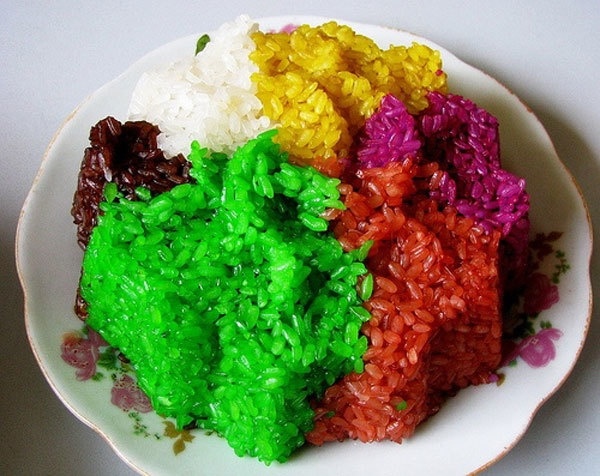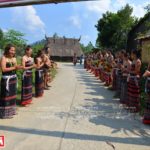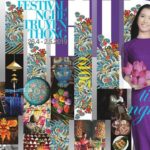The Vietnam Record Association (Vietkings) said the dish carries the profound traditional culture of the Nung Din ethic group in Muong Khuong Town – the birthplace of the dish – not only for its culinary value but also the spirituality of the group.
The seven colours include purple, red, blue, yellow, green, brown and white. The dish is dyed with special leaves collected from the forests or in gardens.
Glutinous rice used to cook the dish should be picked from the mountain because it has a natural fragrance and is softer compared with others.
The process of dying the dish is rather complicated. After collecting the red, camellia and purple magenta leaves in the forest, they are boiled for 20 minutes and used to soak the glutinous rice for 6-8 hours before being steamed.
Locals also use turmeric roots and ginger leaves to make the yellow and green colours.
The dish is often cooked for funerals or wedding anniversaries and particularly during Tet (Lunar New Year) holiday.
Nung Din ethnic people believe that the seven-colour sticky rice will bring them good luck and good health all year round.
Cultural preservation of time-honoured coastal villages
For centuries, the customs and practices of fishermen have denoted the traditional cultural characteristics of coastal regions. However, under recent pressure from the developing economy, these traditional cultural features are facing a number of challenges. Here’s a story from the central province of Quang Nam.









